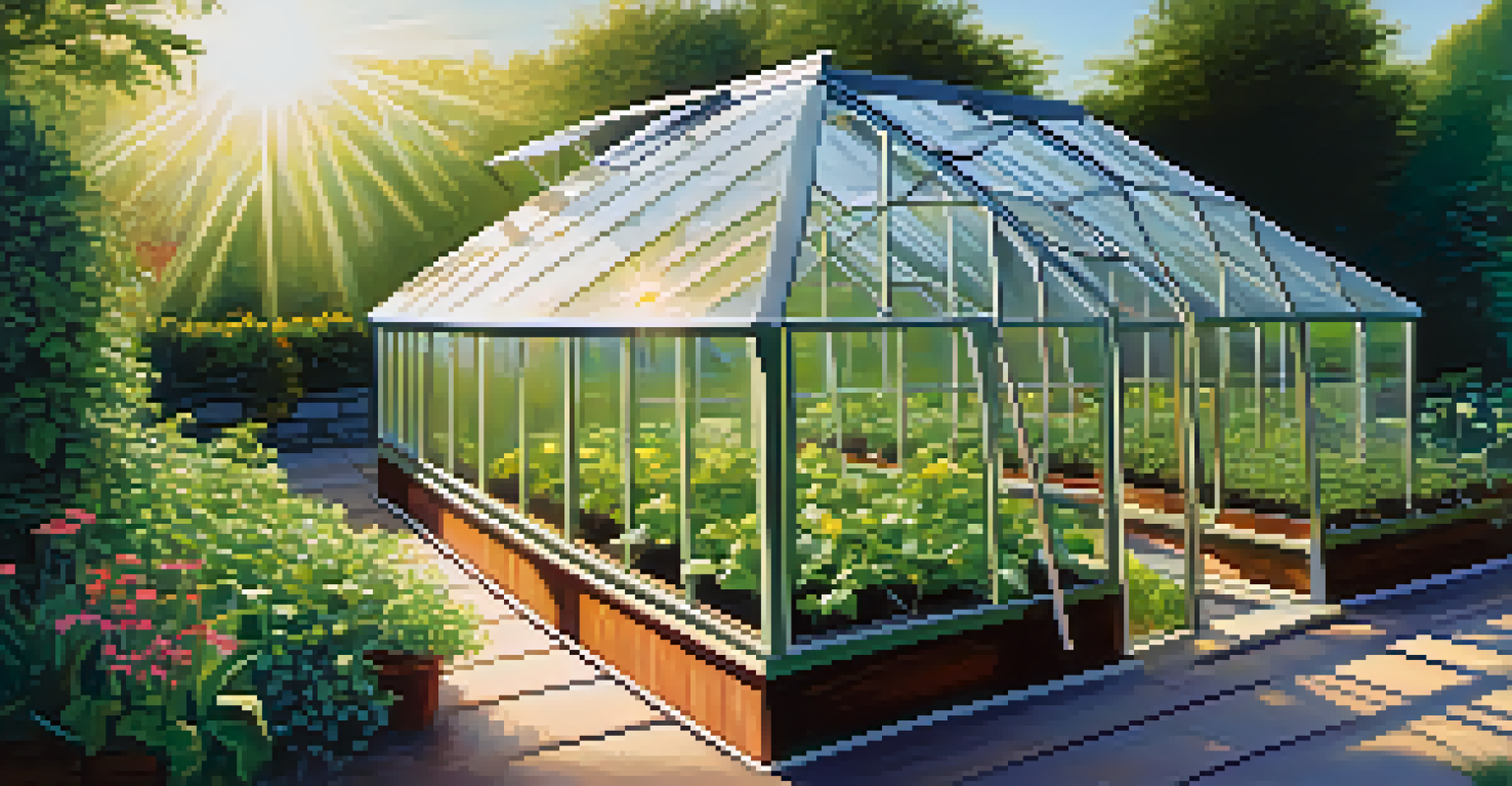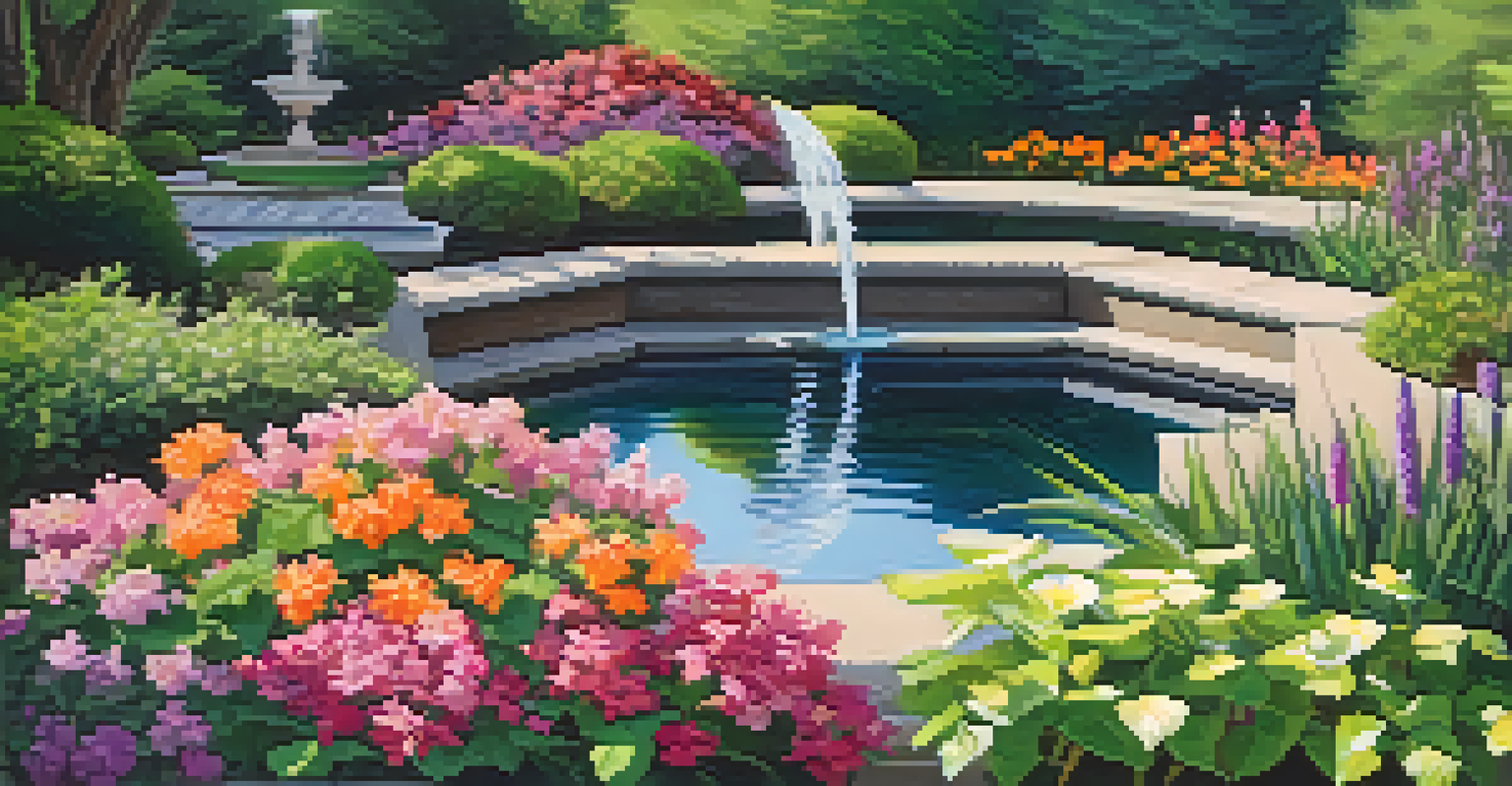Creating Microclimates for Better Plant Growth in Cold Areas

Understanding Microclimates and Their Benefits
Microclimates are small areas where the climate differs from the surrounding region. They can be warmer, cooler, wetter, or drier than the general environment, making them essential for gardening, especially in cold areas. By creating these localized conditions, you can help plants thrive in places where they typically struggle due to harsh weather.
Gardening is not a job; it's a way of life.
For instance, a south-facing wall can absorb sunlight during the day and release it at night, creating a warmer zone for plants. This can be particularly beneficial for sensitive species that require a bit more warmth than the general climate provides. Understanding how microclimates work is the first step in harnessing their power.
In essence, by manipulating your garden's microclimate, you can extend your growing season and improve the overall health of your plants. It's like creating a cozy nook in your garden where certain plants can feel safe and secure, even when the temperature drops.
Identifying Potential Microclimate Areas
To create effective microclimates, start by observing your garden space. Look for areas with natural windbreaks, such as fences or trees, that can protect your plants from harsh winds. Additionally, consider slopes where warmer air tends to accumulate, as these spots can be ideal for growing more delicate plants.

Also, pay attention to sunlight patterns throughout the day. Areas that receive full sun, especially in the winter months, can be perfect for establishing warmer microclimates. Marking these spots will help you plan where to place your plants for optimal growth.
Microclimates Boost Plant Growth
Creating microclimates can help plants thrive by providing localized conditions that suit their needs.
Lastly, don't forget to consider moisture levels in different parts of your garden. Some areas may retain more water due to their location, which can influence plant selection. By understanding these nuances, you can strategically position your plants to thrive despite colder conditions.
Using Structures to Enhance Microclimates
Structures like greenhouses, cold frames, or even simple row covers can significantly enhance microclimates. These tools trap heat and protect plants from frost, creating a more hospitable environment. A greenhouse, for example, allows you to extend your growing season by providing a controlled space for your plants.
To plant a garden is to believe in tomorrow.
Cold frames are a cost-effective way to create a mini greenhouse effect. By placing a transparent lid over a raised bed, you can keep the soil warmer and protect young plants from freezing temperatures. This small investment can make a big difference in the health and yield of your plants.
Ultimately, using these structures can create a nurturing environment for plants that otherwise wouldn't survive in colder climates. Think of it as giving your plants a warm blanket during chilly nights—an essential step for their growth.
Incorporating Mulch and Ground Cover Plants
Mulch plays a vital role in maintaining a stable microclimate. By covering the soil, it helps retain moisture and regulate temperature, creating a buffer against extreme cold. Organic mulch, like straw or wood chips, not only insulates the soil but also enriches it as it decomposes.
Ground cover plants can also be beneficial in creating microclimates. These low-growing plants protect the soil from freezing and provide some shade to the soil surface, which can help retain warmth. Additionally, they reduce soil erosion and improve soil health, creating a more favorable environment for your garden.
Structures Enhance Growing Conditions
Using structures like greenhouses and cold frames can protect plants and extend the growing season.
By utilizing mulch and ground cover, you create a protective layer that helps your plants weather the cold. It’s like giving your garden a cozy blanket to snuggle under during winter months.
Utilizing Water Features for Temperature Regulation
Water features such as ponds or small fountains can also help create microclimates. Water bodies absorb heat during the day and release it at night, moderating temperature fluctuations. This can be particularly beneficial in cold areas where nighttime temperatures can drop drastically.
The presence of water can also attract beneficial wildlife, such as birds and pollinators, which can enhance the overall health of your garden. Imagine a small pond that not only beautifies your garden but also acts as a thermal regulator for your plants.
Incorporating water features is like adding another layer of protection for your plants, helping them to thrive in their microclimate. It’s a natural way to create a more stable environment without heavy machinery or complex systems.
Selecting Plants Suited for Microclimates
Choosing the right plants for your microclimates is crucial for success. Some plants are naturally more resilient to cold and can thrive in the warmer areas you create. For instance, selecting heat-loving varieties for south-facing spots can yield better results than trying to grow them in colder zones.
Consider native plants, as they are often adapted to local conditions and can handle temperature fluctuations. Additionally, grouping plants with similar needs together can create a harmonious environment that supports their growth.
Selecting Plants for Microclimates
Choosing the right plants for specific microclimates ensures optimal growth and resilience against temperature fluctuations.
By being strategic about your plant selections, you can ensure that every corner of your garden is utilized effectively. It's all about matching the right plant with the right microclimate, ensuring a flourishing garden despite the chill in the air.
Maintaining Your Microclimates Throughout the Seasons
Creating a microclimate is just the beginning; maintaining it is equally important. Regular monitoring of your garden’s conditions can help you make necessary adjustments to keep your plants happy and healthy. For example, if a particular area becomes too dry, adding mulch or adjusting watering schedules can help.
As seasons change, be prepared to adapt your strategies. In winter, for instance, you may need to cover certain plants with frost cloth to protect them from sudden temperature drops. Staying attentive to your garden’s needs will ensure that your microclimates remain effective.

Ultimately, maintaining your microclimates is akin to nurturing a friendship; it takes time, attention, and care. By being proactive, you can create a thriving garden that withstands even the coldest winters.